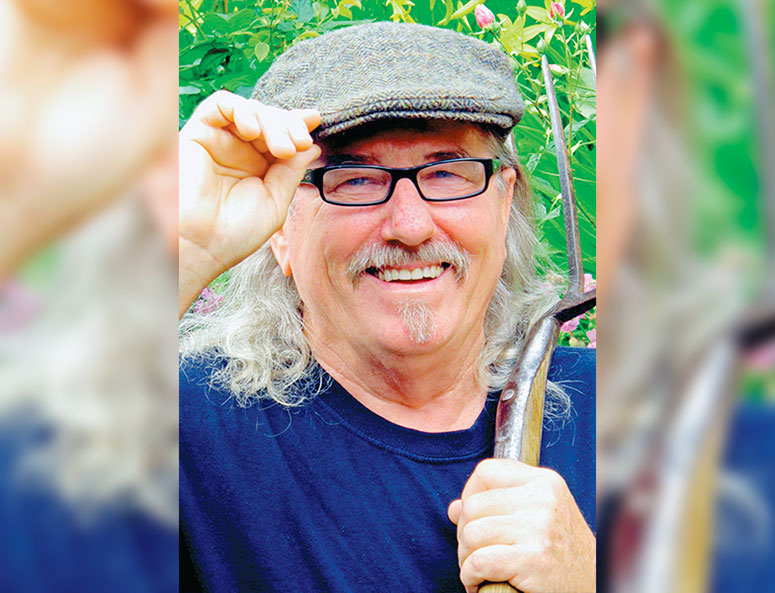
Fresh figs and ‘maters right from the garden, among the most blissful culinary delights ever, are southern gardeners’ heaven on earth. But it has been years since I enjoyed tangy home-grown salsa and sweet home-made fig preserves.
Since official retirement more than a decade ago I have been spending my summers overseas, lecturing and writing for flower shows and botanic gardens, taking me away from my Mississippi cottage garden for sometimes months at a time. Which means that birds get all my figs and I no longer even set out tomato transplants in the spring. But this year, having scheduled a couple of big June lectures here, I gambled on planting stuff I usually have to wait till fall for.
And I have struck culinary gold with three sun-colored favorites: sweet Lemon Boy tomatoes, Yukon Gold potatoes and creamy yellow Kazary figs which are too large to fit in egg crates and sweet as honey with vanilla overtones. Trees for the figs are available commercially now, but I got mine directly from old friend Don Kazary whose Jackson family has shared this unique Lebanese heirloom for generations.
I wasn’t sure about when to harvest the Lemon Boys because they don’t have the traditional red color to go by. But, knowing that once tomato berries start to show any color at all they will continue to ripen and develop their complex goodness even if picked early, I played around a bit.
For decades I mistakenly believed that the reason store-bought tomatoes can’t compare to home-grown left on the vine until fully ripe, but this has been thoroughly debunked. Many old-timers will argue otherwise, even when shown the research. Truth is, tomatoes picked when they first start showing a little pink will continue to develop color and flavor off the vine. Store bought tomatoes tend to be bland simply because they are varieties selected for being firm enough to withstand machine harvesting and be shipped country-wide without bruising.
And by the way, though tomatoes are legally referred to and taxed as vegetables because of how they are grown, botanically they and peppers are berry-type fruits. Just saying.
But to my delight, because of weird winter weather my figs have started maturing already. Depending on climate, some figs are able to make two crops – one on last year’s stems and another on new growth. And this year the first one is extra early. I started to write that the fig “fruits” are getting ripe easily, which is a misnomer because figs not fruits, they are inverted flowers hidden inside the pear-shaped pods. They only make seeds if a tiny wasp gets in through the “eye” at the bottom to crawl around and do the pollinating. Not to worry, my squeamish or vegan friends, we don’t have those wasps here, so there’s no insect inside.
If you ever wondered why store-bought figs are leathery and taste like cardboard, it’s because, being fleshy flowers, they decay quickly. Figs ripen from the bottom up, so each is ready to pluck when the neck gets soft. It should fall right into your hand.
By the way, like commercial growers I train my fig trees into heavy-producing medium size shrubs that have many more fruiting stems on compact plants. In the winter I simply cut back tall stuff and then trim what is left about halfway, leaving at least a few inches of last fall’s stems. Not only do I have more easily-reached figs per bush, but bird netting becomes a practical; option.
So, it’s fig flowers and ‘maters berries, hot off the plants. Time to start savoring.
Felder Rushing is a Mississippi author, columnist and host of the “Gestalt Gardener” on MPB Think Radio. Email gardening questions to [email protected].
Posted in Columns
Quality, in-depth journalism is essential to a healthy community. The Dispatch brings you the most complete reporting and insightful commentary in the Golden Triangle, but we need your help to continue our efforts. In the past week, our reporters have posted 38 articles to cdispatch.com. Please consider subscribing to our website for only $2.30 per week to help support local journalism and our community.


:max_bytes(150000):strip_icc()/Panko-pesto-pasta-FT-RECIPE-0625-86b09a6f6cb341ccab83acb264e88a82.jpg?w=768&resize=768,0&ssl=1)

